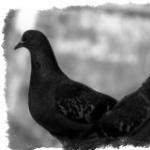Every day we see many beautiful flowers growing in fields, flower beds, pots or indoors, and although they are very beautiful, for us they are ordinary and everyday. And in general, speaking about these representatives of the plant world, we begin to list roses, carnations, daisies, tulips, daffodils, chrysanthemums, lilies and many others, which can be bought in the store at any time of the year. However, in different parts of our planet there are many flowers, which with their originality and unusual appearance (giant size, bright color, non-standard shape, etc.) can even lead to a state of shock. Yes, yes, this also happens. We bring to your attention the top 10 most in the world.
Rafflesia - corpse lily
Features of Rafflesia
What is the uniqueness of this plant? It turns out that it has neither roots nor green leaves, but the flower itself is very beautiful and colorful. It has five bright red fleshy petals that look like thick pancakes, but instead of holes they have growths like warts. From a distance, rafflesia resembles a giant fly agaric. After the flower fully blooms, it lives only 3-4 days, no more. It, unlike roses, violets, daffodils, lilies, etc., has not a pleasant, but simply disgusting smell, which resembles the stench of rotting meat. However, this helps it attract pollinators - dung flies. Thanks to this, it can reproduce.
Wolfia - aquatic inhabitant
This unusual flower is the smallest of all flowering plants on Earth. It looks like a tiny bead. Its size does not exceed 0.8 mm. It lives on the surface of bodies of water North Africa, Asia and America, located in subtropical latitudes. Some people think that these flowers are somehow related to the wolf family, due to their name. However, this is not at all true. Wolfia is named after the German botanist J. Wolf. There are not so many of this plant in the world - only 17 species. All of them are “waterfowl” and feed on nutrients dissolved in the reservoir. Many people don't even realize that these small green balls are flowers.

Amorphophallus (titanic)
This plant is a competitor to Rafflesia and also claims the title. It, like the other giant, has a disgusting “aroma” and spreads over many tens of meters. This unusual flower begins to bloom for the first time at the age of 5. It is also called Voodoo Lily, Devil's Tongue, or Snake Palm. As for the name “amorphophallus”, it is translated from Greek as “shapeless phallus”. 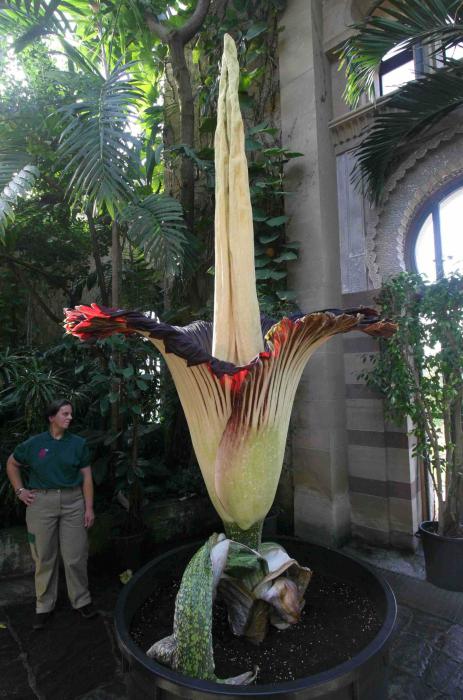
This flower grows in height and can reach more than two meters, but the width is about one and a half meters. Over the 40 years of its existence, it can bloom only 2-3 times, and this lasts only 2 days. In the wild, amorphophallus can be found mainly on the island of Sumatra. However, in many botanical gardens all over the world you can also see this original flower. The only thing is that not every visitor to these gardens will be able to get close enough to it, because sometimes its smell can even cause vomiting.
Orchid Kalania
Like all orchids, this one beautiful flower unusual and even a little funny, because in appearance it resembles a flying duck. It can mainly be found in Australia, on the so-called Green Continent. Local residents called it a “flying duck” for its resemblance to one of the representatives of the bird world. Studying this plant, scientists were again surprised by the wisdom of Mother Nature. Such unusual shape The Kalania orchid needs it to attract sawflies - small flying insects. It turns out that male sawflies see a female in this flower, whose size reaches only 2 cm, and rush to her to mate, but instead become covered with its pollen, which is then transferred to other “ducks”. As a result of this, pollination occurs.
Psychotria sublime
Another unusual flower is psychotria pöppiga or elata. This plant can perhaps be called the most original and piquant in the world. People nicknamed him “hot lips” for his appearance. Its bright red inflorescence exactly resembles lush, voluminous painted lips. This is a tropical plant. It loves warmth and moisture very much. The birthplace of sublime Psychotria is America, and it can be found both in the central and southern regions of the New World. Most often it is found in such temperamental countries as Costa Rica, Panama, Colombia, etc. If all the conditions are created, then this plant can be grown at home, and then it turns into indoor flower. Its unusual appearance will delight everyone who enters the house and sees this miracle: a lot of red sponges among the green foliage of a plant growing in a tub. It belongs to the Marenov family. This family is one of the most widespread throughout the world: more than 1,700 species. “Hot sponges”, by the way, is not a shrub, but a dwarf tree. And you can grow this unusual flower with your own hands. However, in order to bring it from its homeland, you will need a special permit-certificate. Therefore, many are content to admire only his photographs. By the way, these days you can order 3-D photo wallpapers with the image of this passionate flower and contemplate its image every day.

Passionflower
This beautiful flower grows in Latin America. It has a very attractive appearance. But its main feature is that when we look at it, it seems to us that it consists of two fused buds. However, this is just an optical illusion.
Sundew
This is quite a pretty, but unremarkable flower. However, it attracts various insects, and all thanks to the special liquid it secretes during the flowering period.
Sexy orchid
But this flower is very similar in shape to Kalanya. However, in addition to reminding wasps of females, it also releases special pheromones that attract them to itself.
African Hydnora
Mousetrap flower
Nepenthes Attenborough can perhaps be called the most unusual flower in the world, since it feeds on small rodents. The scientists who figured this out 14 years ago were truly perplexed.

Conclusion
Our life becomes brighter and more interesting thanks to some unusual things that, although rare, leave an impression for a lifetime. These may include the above flowers.
The world of flowers is huge and diverse. Some flowers are the biggest, some are the most beautiful, and some are very original. Amazing with their harmony and wonderful combination, representatives of the richest flora make you once again linger with admiring glances at the wonderful works of nature. Let's take a virtual tour today of the most original flowers.
Going on a visual journey, the first to meet
the most unusual flowers
Nepenthes Attenborough. The missionaries' story about the mysterious "pitchers" that caught and ate small rodents interested three scientists and they, going on a special expedition to the island of Palawan, found an unusual flower on Mount Victoria. This happened in 2000. It remains a mystery how it has survived to this day.
Sundew. It feeds on insects, which, when they get on the plant, are retained due to the secreted mucus. They grow in swamps, mountains and sandstones.
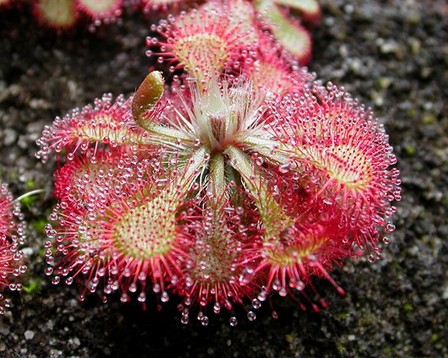
Having about 500 species. Reaches a diameter of up to 10 cm. It grows in Latin America.


Psychotria sublime- the most piquant flower. Because of its bright red inflorescences, it is called “hot sponges”. It loves moisture and warmth, so the forests of South and Central America are a fertile place for it.

- a foul-smelling flower that has no root, no stem, no leaves. But it is capable of collecting up to 7 liters of water. Located on the Malay Peninsula, Yama Islands, Philippines.
The most beautiful flowers
The concept of beauty has always been combined with brightness, sophistication and grace. Looking through the list of the most magnificent, you may be indignant at not finding your friends and loved ones. Perhaps, having gotten to know each other better, you will change your preference.

Sakura- symbol of Japan. Short flowering forces the Japanese to temporarily quit work to enjoy the wondrous, fragile beauty.

Canna- the only representative of his family. There are more than 50 species and different colors. Its homeland is Central and South America, but it takes root quite well in Europe.
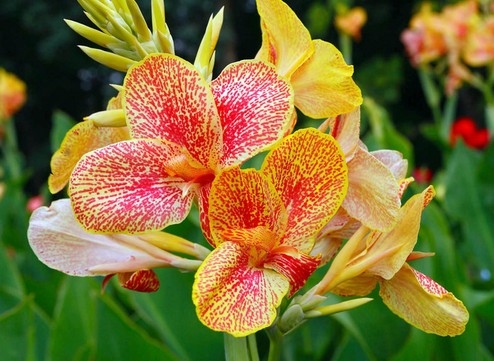
Strelizia or Bird of Paradise. It acquired this name due to the arrangement of flowers, which outwardly resembles the plumage of a tropical bird. The only habitat is South Africa, but here we have it in the form indoor plants or cut exotic.

Hydrangea. Large and beautiful inflorescences, a variety of species, more than 600, to the taste of amateur gardeners. The history of the name is also fascinating, taking you back to the times of the Holy Roman Empire to the lovely Princess Hortense.

Calla or Whitewing. It increasingly decorates wedding bouquets and home flowerpots. The striking snow-whiteness makes one forget its usual habitat - the shore of a reservoir and marshy areas.
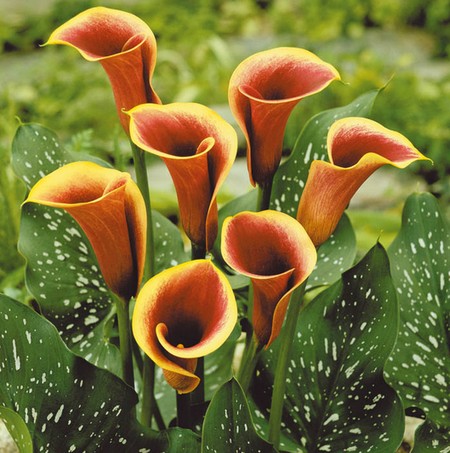
Rudbeckia. Carl Linnaeus knew the Swedish botanist, who was not only his friend, but also his teacher. The surname of the scientist Rudbeck gave the official name to the flower, although in each country it is called differently: in Ukraine - Ox-eye, in North America, in its homeland - Black-Eyed Suzanne, and in Germany - Sunbonnet.

Dicentra is magnificent– the heart-shaped flower shape and drooping appearance confirms various legends about unhappy love. The French called it the Heart of Jeannette, the British - the Bleeding Heart, and the Poles - the Slipper of the Mother of God.

reminiscent of a young man who was in love with the God Apollo. While communicating and playing with disks, they did not notice the flying Zephyr - the God of the South Wind, who also loved Hyacinth. By the will of fate, the disk, changing direction from Apollo’s hand, fell into the heart of the handsome young man. Drops of blood turned into a flower, in memory of beautiful love.

- an evergreen shrub native to Central and South America. During flowering it attracts because it changes color: yellow gradually turns into a purple tone. Exuding a pleasant aroma, it grows very vigorously, so some attribute it to a weed.
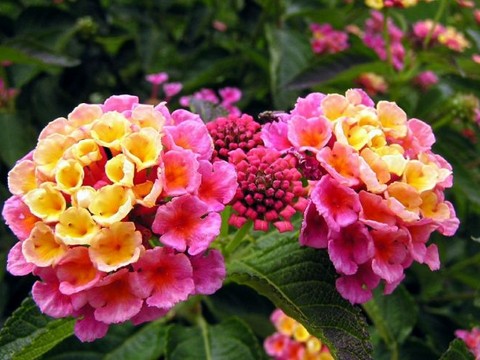
- a perennial herbaceous plant. It is protected by the International Convention, as it belongs to the orchid family. Translated from Greek as “tree of life”, it contains more than 1000 species. Very careful care is required, but the beautiful variety of colors attracts amateur gardeners.

Flowers are the most fragrant
Flowers sometimes attract not only with their external charm, but also with their fragrant and pleasant smell. Although they do not seem particularly attractive at first glance, they make up the list of favorites, possessing an exquisite and unique aroma.
– also called “flame” because of the bright red flowers. Unpretentiousness and variety of colors, riotous flowering make it possible to be desired by flower garden fans. Perennial and annual, low-growing and rather tall - they all have a light and sweet fragrance.
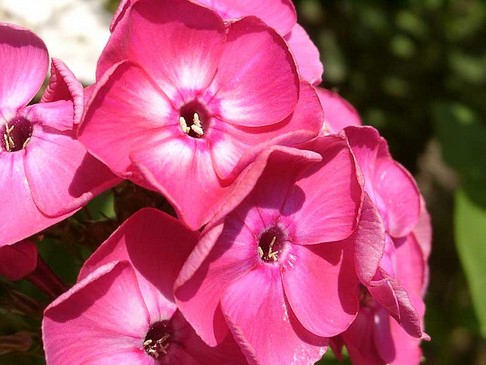
Lilies– have more than 30 species. A perennial plant that reproduces by bulbs, it is used in perfumery, but some varieties are poisonous and lethal to cats.
It is liked by gardeners who want change, as it is an annual. To decorate a fence, gazebo, terrace and even a wall - this is the best option. Light-loving and afraid of the wind, touching delicate flower grows well in rich soil.

- an annual flower called "night violet". In the evening and at night it fills with aroma, although it has a discreet color. Due to its strong odor, it is varied with brightly colored but fragrant plants. It blooms for almost a month and a half, loves sunny places, but does not like prolonged drought.

Chrysanthemum- princess of autumn, with a honey aroma. Various and magnificent flowers, quite easy to care for and revered in their homeland: in Korea and China.

Lily of the valley– grows well in both shade and sun. There is no need to bend over to smell the delicious aroma. Small tassels with white bells will be noticeable in any corner of the garden.
The smallest flowers
Small and cute flowers surprise with their symmetry and at the same time sophistication. Having a small size, they amaze with individuality and beauty. Nature has endowed them with such subtle elements that sometimes it’s hard to believe how such fragile creatures can withstand strong winds and the hot sun. Possessing incredible desire, they grow in opposition to strong and powerful plants.

Crocus It also has another name - saffron. The very first spring flowers are very unpretentious and tolerate winter well. Due to their small size, they are usually planted in groups. They bloom en masse for no more than 2 weeks, having different colors. They love the sun, so when they fall into the shade, they simply do not bloom. They reproduce by tubers and also grow in indoor flowerpots. Dried stigmas are used to prepare saffron seasoning.

Mouse hyacinth or muscarine. Quite easy to care for and reproduce. It is good to plant for the winter, the roots go deeper. The plant becomes strong, having the opportunity to fully bloom. Bulbs planted in the spring, having not survived the frost and not strengthened, do not fill with color.

Pansies or violas. The legend tells about the devoted love of a young girl who looks long and carefully at the road, waiting to meet her beloved. He never returned; he died defending his homeland. The flower is credited with witchcraft properties: by sprinkling the juice on the eyes of a sleeping person, you can bewitch him forever. When he wakes up, he will not be able to look away from his admiring gaze. Perennial plants, no more than 30 cm in height, benefit from early and abundant flowering.

Cockerels or irises. The appearance resembles the crest of a rooster. We have the existing variety of colors thanks to selection. The varieties developed surprise with their rich selection: small, large, shaggy, smooth. Each species is planted at a distance to prevent unwanted pollination.
![]()
OrchidPlatystelegenus-small flower. The leaf diameter is only 2.1 mm. The transparent petals are very thin and fragile. Homeland - Ecuador, American Louis Jost discovered it by accident in the roots of other plants.
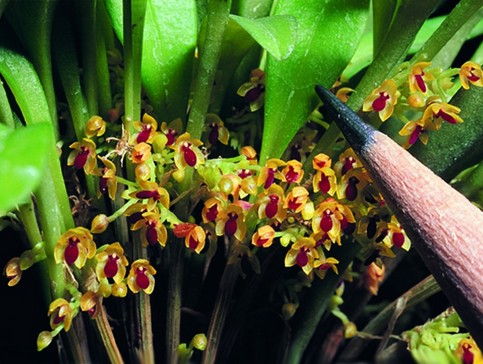
Wolfia. It has neither leaves nor roots. The fused leaf formations lie on the surface of the reservoir, where the water does not change. The size is smaller than a pin needle. Pollinated by insects and wind. Not afraid of cold winters and hot summers. It is a valuable delicacy for the inhabitants of the aquarium.

The bud size is only 5 mm, almost like a grain of rice. You can view it through a magnifying glass. It took several years to create. An Indian botanist irradiated a rose with electromagnetic rays to slow down and stop its growth. The end result was a miniature look.

And large flowers close the tour.
Rafflesia Arnoldi. The bloody color, huge diameter - about 90 cm and weight of almost 11 kg makes you simply scared at the sight of such a giant. In addition, it has a nasty smell, and only flies pollinate it. Appearing a long time ago, it was tiny. Gradually from a few millimeters, through evolution it reached large sizes.

Amorphophallus Titanium- dormouse plant. Consists of numerous female and male inflorescences. It spends a lot of time in a tuber state, which is why it gets its name. Flowering lasts only a few days, but you wouldn’t wish the smell on your enemy.
All the flowers are phenomenal. And all the flowers are the best. And by highlighting some, we begin to forget about others. Is it worth it? Nature has given us many faces and rare species. Well, let's just love them. Reproduce, grow, solve, make them.
Our planet never ceases to amaze with the diversity of its flora. How many unusual plants Mother Nature gave to the world! Beautiful and ugly, ordinary and bizarre, they decorate this world! Let's get to know them better.

Flying ducks hide under the eucalyptus trees of southern and eastern Australia. This is the name of the flowers of the delicate Kalania Orchid, which really look like tiny ducklings. The plant is not very tall, 50-60 cm. The flowers have a dark purple or brown tint. There can be 2 or 4 flowers on 1 stem of an Orchid. “Flight of the Ducks” lasts from September to January.

A lover of the tropics, Tacca Chantrier is one of the most elegant plants. Its home is the mountain slopes, rainforests of Southeast Asia and West Africa. The plant is known as “black lily”, “black butterfly”, “ bat", "devil's flower". The wings of the “butterfly” are dark burgundy or black. They bloom from February to August, releasing from 5 to 25 long thin threads. They are the main decoration of the plant.

From elegance to piquancy! This is the word that is suitable to describe Psychotria, which lives in Colombia, Panama and Costa Rica. This forest tree has lips that are also painted! But, in fact, this is not a flower, but an unusual bright red bract. It is a “house” for 5 little “snowflakes”. The white flowers produce blue fruits that resemble blueberries.

An equally interesting plant can be seen in the vastness of Malaya. The strong two-meter stem seems to hold a large pine cone. The real name is Ginger Beehive.
You can admire the beauty of unusual “cones” both in summer and autumn. They bloom from July to November. During this period, the hive resembles a microphone into which small birds and insects produce their trills.
The plant is also called the “sun flower”. The more the heavenly body gives it its rays, the brighter it becomes.

The gigantic size of this plant allows it to be the king among the unusual flowers of the planet. Amorphophallus titanica can reach 2.5 meters high and 1.5 wide.
It has an erect, very short stem, several small leaves and one large leaf. The royal robe of the flower is dark burgundy on the inside and light green on the outside. Amorphophallus resembles a candlestick containing a large candle. For some, its shape evokes an association with calla lilies. But, coming closer to the plant, the opinion immediately dissipates. Its smell of rotten fish, which is why Amorphophallus is called the “corpse flower,” is intimidating! Although many insects like it. Despite the unpleasant aroma, the giant has several features:
- Rarely blooms.
- The flowering period is only 2 days.
The birthplace of the tropical plant was Fr. Sumatra (Indonesia). Now, it can be seen in botanical gardens around the world.
During the flowering period, the plant resembles a three-headed cobra. It has a rough surface, bright orange color with inside and brown on the outside. Gidnora has no leaves. But one of the main features is bad smell, attracting beetles, which pollinate the flower.
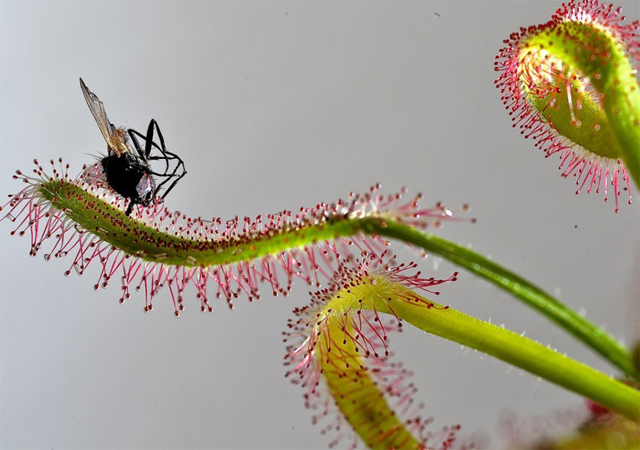
Summer is a wonderful period for Rosyanka, or “solar dew.” Small white and pink flowers cover swamps and mountain slopes almost all over the world. But their largest number is concentrated in Australia and New Zealand.
The mesmerizing drops of dew that form on the thin red hairs of the plant create a very delicate picture of nature. But behind this beauty lies a real predator! The “cunning flower” attracts insects with its cuteness, turning into a death trap for them. Dew crystals are sticky poison. It paralyzes the insect, after which the Sundew leaf begins to curl, slowly poisoning the prey. An interesting fact is that it only reacts to organic food. If a leaf or twig hits, nothing will happen.
It’s true what they say: “Behind a beautiful appearance there can be bad soul" This can be said about one more representative unusual world nature - about Rafflesia...

A large flower resembling a head of cabbage has 5 circular petals and a spherical middle. Its “cheerful” color attracts attention. The bright brick petals with white spots look like Dalmatians. The absence of roots, stems and leaves is one of the features of peculiar flowers. Rafflesia is no exception. You can get acquainted with her in such exotic corners of the planet as the Philippines, o. Java and o. Sumatra. The plant poses a threat to climbing vines.
The flowering period of Rafflesia is short and lasts only 5-7 days. After which she loses her attractiveness. Where I was bright flower, only a black mass remains, forming a large round fruit with small seeds inside. It is so hard that only a huge animal, such as an elephant, can crush it.
Thanks to its ability to absorb large number water (up to 7 l), Rafflesia was given another name - “loofah flower”. She is also the holder of the title "Corpse Lily", the "stink flower", for her unpleasant perfume. The smell of spoiled meat is not the most attractive! But this is nothing compared to Rafflesia’s terrible neighbor – the Pitcher Flower...

The very name of the plant speaks volumes about its shape. But this feature is not what helped it get on the list of unusual flowers.
Resident of the Philippines and Fr. Sumatra, China and Malaysia, Madagascar and Indonesia pose a great danger to living organisms. The flower is killing them! The deep inflorescence is filled with liquid, in which defenseless insects, lizards, birds, and mice drown.
Each flower is a wonderful world, with its own mysteries!
Rafflesia arnoldi ( Rafflesia arnoldii )

Blue Lotus
It amazes with its beauty, color and aroma. Has strong psychotropic properties. Since ancient times, perfumes have been made from blue lotus petals. In Russia it is included in the list of narcotic drugs, the circulation of which is strictly prohibited.

Venus trap (flytrap)
As you already understood from the name, the Venus trap feeds on insects. This amazing flower It has an unusual appearance and an interesting mechanism for capturing insects. He gets his food using special traps. As soon as a fly or other insect lands on the odorous trap, it will slam shut in less than 1 second!

Titan Arum And )
Another huge flower. Titan Arum can reach 3 meters in diameter and 2-3 meters in height. The weight of a flower can be up to 65 kilograms. And also (like Rafflesia) it has an unpleasant odor, which attracts pollinating insects. The plant lives for about 40 years. During this time, amorphophallus blooms only a couple of times. The miracle flower was discovered by a Florentine scientist on the island of Sumatra in 1878. Grows in Indonesia.
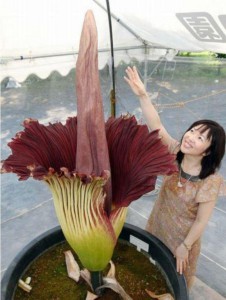
P Psychotria Elata
The flower surprisingly resembles human lips. When I saw it for the first time a few years ago, I thought it was photoshopped. But no, it’s a very famous plant in the world. Distributed in the forests of Costa Rica. Because of its shape and color, it is often called “hot lips,” “flower lips,” or “Hooker lips.” The plant acquired this form by evolving in order to attract more pollinators, hummingbirds and butterflies with its appearance.
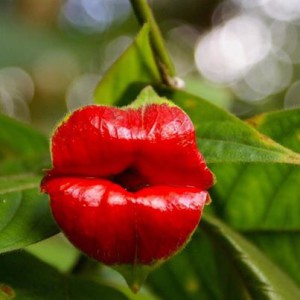
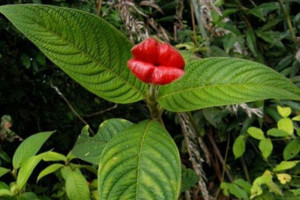
Velvichia
The plant is long-lived. Scientists suggest that it can live from 400 to 1500 years!
Velvichia has only two leaves up to 20 cm wide, which spread along the ground up to 1 meter in length. Its inflorescences are very similar to cones.
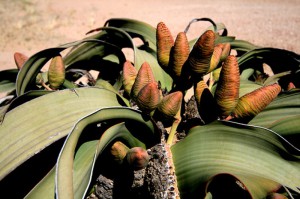
Water lily Victoria regia (Victoria amozonica)
This is not just a classic swamp lily. It can reach a diameter of 3 meters on a stem 8 meters long. The leaf of this plant can support a weight of 100 kilograms.
The water lily is also called the "bird frying pan." To prevent rainwater from accumulating in this huge “saucer”, the water lily has small holes - weirs, through which all excess moisture drains into the surface of the leaf.
Its flower is located under water and appears on the surface only once a year - during flowering, which lasts only 2-3 days. The flower blooms only at night, and at dawn it collects all its petals and goes under water. On the first day of flowering, the flower opens pale white petals. The next day they already have a soft pink tint, and on its last evening the flower turns dark crimson or purple. After that, he sinks under water and does not appear again. Local Indians use them to prepare a very unusual dish that tastes like roasted corn. The surface of the Amazonian water lily can withstand loads of up to 40-50 kilograms.
In nature, a water lily can live up to 5 years.

Wolfia (Wolffia angusta)
The smallest flower in the world, with a diameter of 0.3 to 2 millimeters. Wolffia balls float freely in the water, consuming nutrients dissolved in it. Wolfia has no roots or leaves. It blooms very rarely. Wolfia grows in North and Western America.
Wolffia is edible and contains a large amount of protein.

Drakea
This is an unusual orchid growing in Australia. The dracaea continually blooms during the 6 weeks during which the male wasp of the particular species of wasp that pollinates the flower hatches and lives.
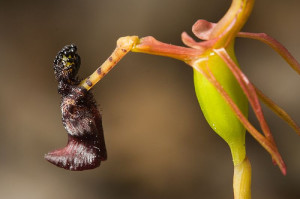
Takka
Takka has many names: bat, black lily, devil's flower, cat's whiskers. This is a perennial plant, and it flowers and bears fruit. all year round! It is grown in greenhouses and winter gardens in Europe. IN lately it is becoming more and more popular. In nature, Tacca is found in many tropical countries. The local population uses young leaves and inflorescences, as well as the pulp of fruits for food, makes hats and fishing gear from the stems, and prepares flour from the rhizomes for baking bread, sweets, and medicine.

African Hydnora africana
Nepenthes
The most carnivorous plant in the world. Frogs, birds and even rats are caught in its traps and digested with the help of enzymes. The plant has modified leaves that are shaped like jugs. The inner surface of the jug is lined with cells that secrete nectar, which serves to attract insects, as well as “hair cells” that make the release of an insect caught in the net impossible. The surface of the “neck” of the jug is very slippery, so there is practically no chance for an insect walking along the neck not to slip down. An insect falls into the water (at individual species the jug can contain up to 2 liters of water) and sinks. Next, enzymes are produced that completely “digest” the insect. Sometimes not only insects, but even mice, rats, and birds are trapped. Grows in tropical forests of Asia, on. Borneo and Indonesia.


Dracula
This is one of the types of orchids that strongly resembles a monkey's face. Because of its unusual appearance, the plant received the name Monkey Orchid. Flowers grow in the mountain forests of southeastern Ecuador and Peru at an altitude of 1-2 thousand meters.
Starfish sisters - Stapelia
These “velvet” flowers are native to South and South-West Africa, so they can withstand prolonged drought. Stapelias captivate the hearts of gardeners around the world thanks to the exotic beauty of large flowers (up to 15 cm) and the unpretentiousness characteristic of all succulents. A blossoming bud is a truly magnificent sight, prompting you to take up the camera and capture the mesmerizing beauty. But slipways have a secret: in a warm room or under the rays of the sun, the flowers begin to emit an unpleasant smell of rotten meat - this is how the plant attracts pollinating flies. But this does not stop fans of decorative beauties of the family of swallowtails (Asclepiadaceae), which numbers more than 75 species of “star” plants.

Bee flowers and other orchids
One of the most inventive flowers is the beloved orchids (Orchidаceae), known not only for their delicate beauty, but also for the baking aroma they give people—it is from the fruits of the Vanilla planifolia vine that such a valuable and popular spice is obtained. The Orchid family appeared in the Late Cretaceous era, and is one of the most ancient on the planet, populating all continents except Antarctica. Perhaps it was their considerable age and “experience” that endowed its representatives with ingenuity and a whole arsenal of tricks that orchids use for pollination.

The outwardly unremarkable dracaea, which grows in Australia, resembles a hammer swaying in the wind. It blooms only for the month and a half when the males of one of the wasp species - Thynnid - are born and live their life cycle, which pollinate this plant without receiving anything in return. Why cooperate if you can simply deceive them? After all, the flower somehow knows that female wasps do not fly, but wait for mating dances on flowers - that’s why the dracaea pretends to be this female: the calyx of the flower not only represents her abdomen in structure and color, but also releases similar pheromones that attract males! In the core of the drakea, the deceived “Don Juan” finds the same long fluff that grows on the female’s abdomen, and, being in full confidence that in front of him is a real mating partner, the unlucky male performs pseudo-copulation, and, flying to another flower, performs cross-pollination.

Another orchid that has linked its fate with bees is the orchid. In Hebrew, the name means “bee”, which is due to the external similarity of the flower to an insect and the ability of this orchid to imitate the smell of female bees. This type of orchid is most common in the Mediterranean. Like all other members of the family, ophrys flowers do not contain nectar, using deception to attach pollen to pollinators. Other Orchidaceae are no less inventive: they shoot pollen at insects, drop them with movable petals onto the anther, intoxicate them with aromas, and glue movable stamens with pollen to the pollinators, precisely calculated to land on the stigma of the pistil. And who after this will doubt that our green friends are not endowed with intelligence?
underground flowers

Cryptanthemis slateri flowers are white, small in size, and bloom at a depth of about 2 cm, and when the fruit is set, the flower first forms a mound of soil and leaves, and then stretches to the surface so that the capsules ripen and disperse the seeds. Since the beginning of the 20th century, these flowers have no longer been discovered, and there is a possibility that they have already disappeared. But most likely, this orchid is simply hiding securely. One way or another, these flowers are included in the list of protected plants, and photographs of them are now in great short supply.
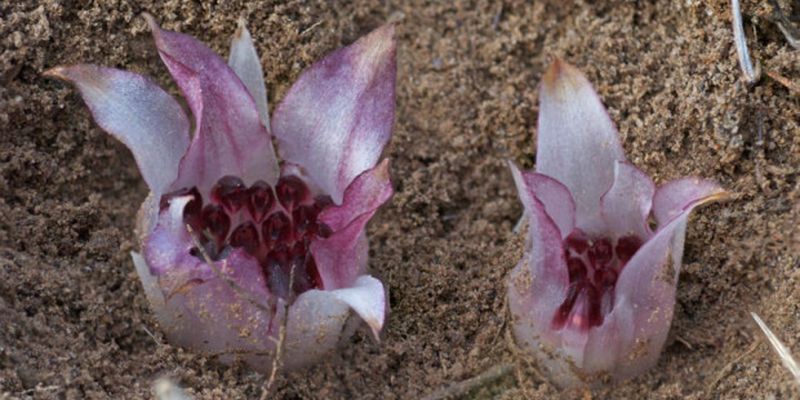
"Warming" flowers

These are beautiful bright flowers, strewing shrubs and trees, grow even among the snow on the shores of the Bering Sea. We are, of course, talking about rhododendrons (Rhododendron) - natural solar batteries.

These plants in the heather family use heat from the sun to melt the snow around them - apparently working as an infrared transmitter. Such abilities also depend on the varieties of rhododendrons: there are about 800 species, including both evergreen and deciduous plants, which are excellent honey plants in early spring.

Banksia is a representative of the Proteaceae family, and like all its relatives, it has a fantastic, bright appearance. It belongs to evergreen trees up to 20-30 meters tall, sometimes creeping in such a way that the stems are hidden underground. They contain amazingly shaped inflorescences that resemble huge fluffy candles. The type of inflorescence is a raceme, and at the same time it can contain up to four thousand small tubular flowers. Banksia lives mainly in the southern arid regions of Australia, and is one of the symbols of the continent along with eucalyptus.
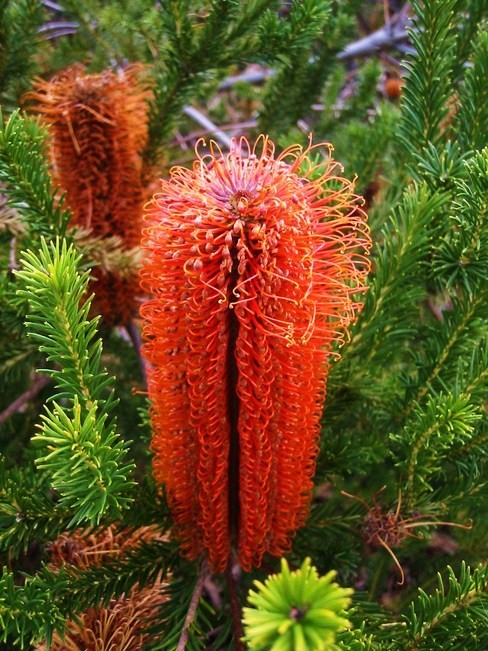
Banksia leads a predominantly nocturnal lifestyle: with the onset of dusk, the flowers begin to intensely produce essential oils, which attracts insects, small rodents, possums, and bats, which pollinate the plant. Banksia flowers are wonderful honey plants, and the indigenous inhabitants of the continent have been eating them since ancient times - they have always been almost the only source of natural sugars (since the aborigines did not engage in farming).
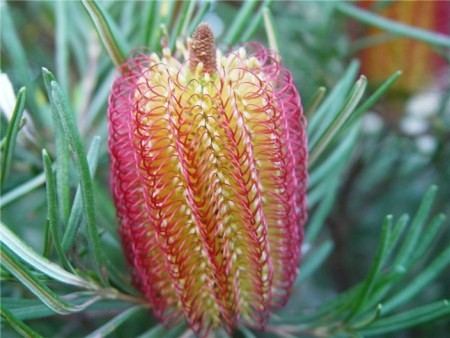
Like most Australian plants, banksia is a pyrophyte, that is, it reproduces with the help of... fires that occur when dry plants spontaneously ignite at a temperature peak. Seed pod The structure of these plants is so dense that it bursts only when exposed to ultra-high temperatures, releasing the seeds.
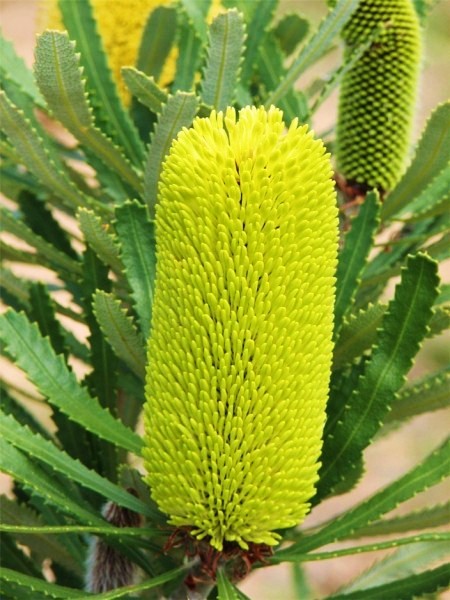
Dracunculus vulgaris.Folk nicknames for this flower and its close relatives include names such as witch lily, snake lily, stinking lily and black dragon. This foul-smelling flower is native to Greece, and again its stench is similar to the smell of rotting flesh. The good thing is that it doesn’t last long, about a day, but the scent leaves behind a magnificent and unique flower.

Stapelia gigantea is a corpse flower that emits the smell of rotting flesh. In fact, it is believed that the hairy, leather-like surface is an additional way to imitate the rotting flesh of a dead animal, which provides additional attractiveness to pollinating flies. Thanks to its pleasant appearance, the flower has earned some fame among farmers. Of course, it is highly recommended to keep them outside so that fresh air can dispel the stench.

Titan arum - holds the title of the worst-smelling flower in the world. It emits the stench of a rotting corpse. But at the same time, the plant thrives in nature, since its main pollinators are flies and beetles, which prefer to lay eggs in dead flesh. In addition, the flower is truly titanic in size, it is the largest inflorescence without branches in the world; in a word, it is a large and foul-smelling splendor. The vase-like outer shell contains thousands of flowers, all of which emit a stench. The inside of the plant is the color of red meat, which adds to the resemblance to a corpse. One good thing is the short flowering period, lasting from 24 to 48 hours, with the flower blooming once every 4-6 years.

Ceratonia pod. The inflorescences of Ceratonia pods look harmless. Male flowers are known for producing a distinct odor of seminal fluid. Paradoxically, the achenes of this tree are highly valued because they can be crushed and used as a chocolate substitute.

Banana , which, although we call it a fruit, is actually a berry.The formation of a banana bud is a rather curious sight: first, at the top of the so-called trunk of the plant, which is actually leaves tightly adjacent to each other, a shortened leaf resembling a heart appears. Then the upper part of the trunk increases and becomes thicker than the lower part.

Finally, in the center of the rosette of leaves, a large lilac bud becomes noticeable, which gradually grows larger, becomes heavier, and, blooming, falls down. Banana inflorescence is a raceme consisting of three types flowers: large female flowers are located at the base, medium-sized bisexual flowers are located in the middle, and small male flowers are at the end. All flowers are arranged in tiers, or so-called “arms,” consisting of one to two dozen flowers, covered with hard, waxy leaves that feel hard to the touch. Turning into fruits, these flowers are called “fingers” - this is how “banana” is translated from Arabic.

Three medium-sized “fingers” (of a wild banana, of course) weigh about half a kilo, and flowering begins at night or at dawn. That's why bats pollinate the plant.birds and even small mammals.



Rafflesia develops quite slowly: about three years pass from sowing seeds to the appearance of buds, then another nine to eighteen months are required for the bud to bloom, but the time of flowering of rafflesia itself is very short: only two to four days.
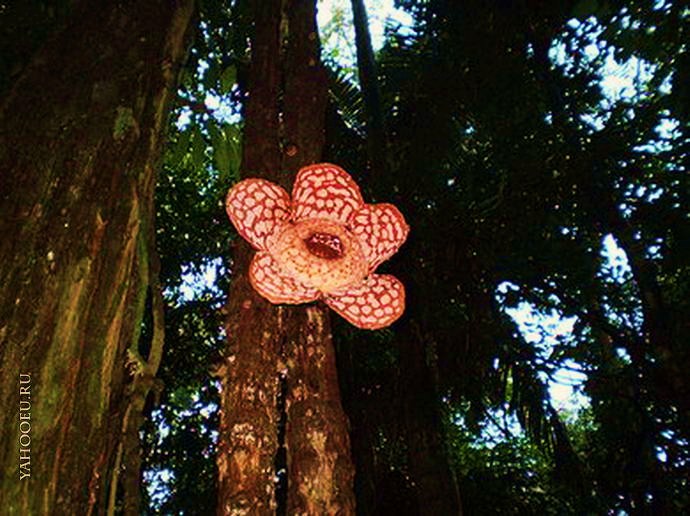

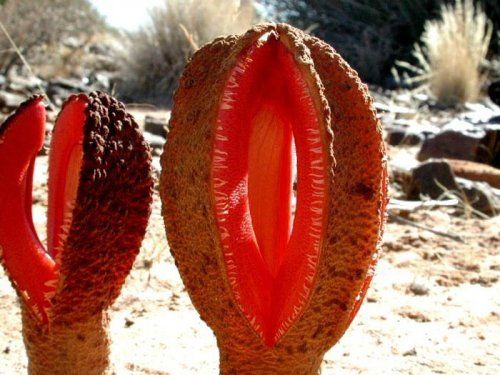
This plant has many names: passion fruit, chinola, passion flower, passion flower or purple granadilla. From a botanical point of view, this plant species belongs to the genus Passiflora. Passion fruit - these are dark purple or yellow-orange oval-shaped fruits that are a valuable source of “fast” energy - fructose, vitamins, fiber and minerals, including potassium.

There are more than 400 species of ornamental passion flowers that are grown in Panama, the Caribbean, South Florida, Hawaii, Brazil, the Dominican Republic, Israel, East and South Africa, Australia, as well as on the southern coast of Crimea and the Black Sea coast of the Caucasus.
ADDITION
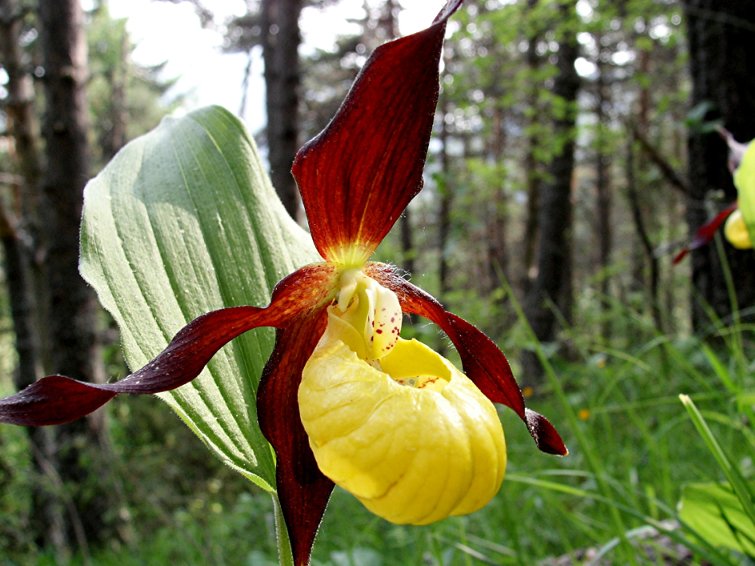
In order for a flower to survive, it is not enough to captivate us with its beauty and delicate aroma. Being a reproductive organ, it is forced to resort to various tricks in order to attract pollinators - insects or birds. During the course of evolution, many flowers acquired bright colors and bizarre shapes that allow you to see completely unexpected images in them - insects, birds or even animals. This happens especially often with orchids.



Monkey-faced orchid (Dracula Simia)


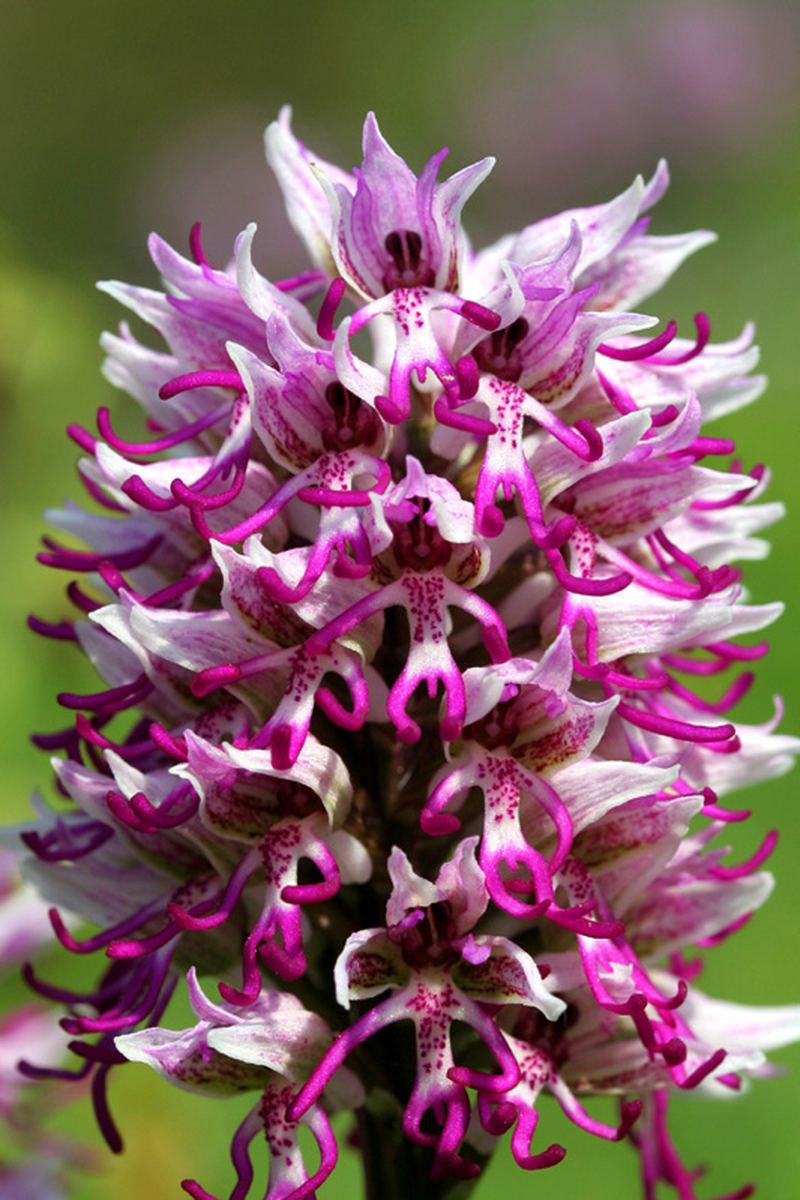


Orchid - naked man (Orchis Italica)

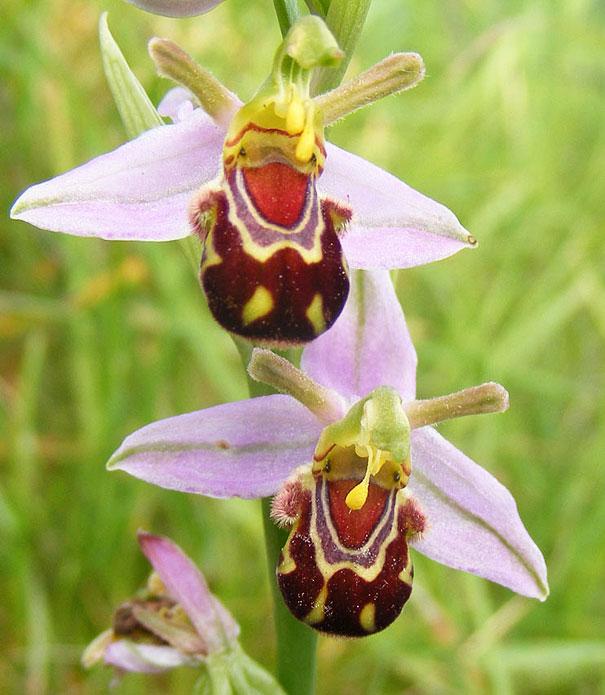
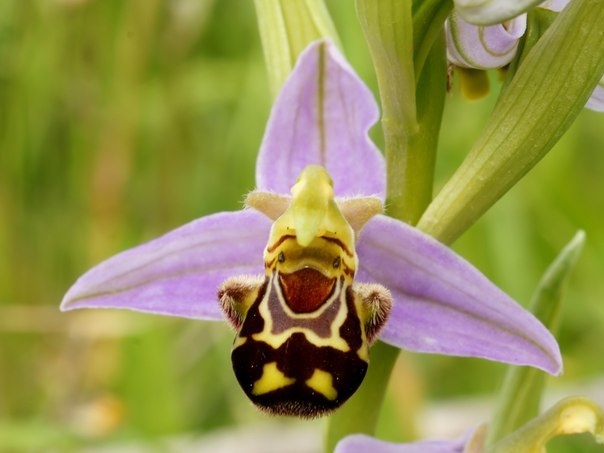
Laughing bumblebee orchid (Ophrys bomybliflora)

Dancing girls (Impatiens Bequaertii)

Swaddled Babies (Anguloa Uniflora)
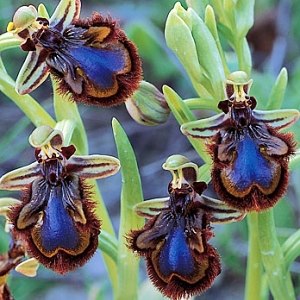
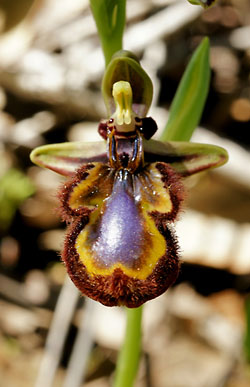
Insect. Specular ophrys (Ophrys speculum)

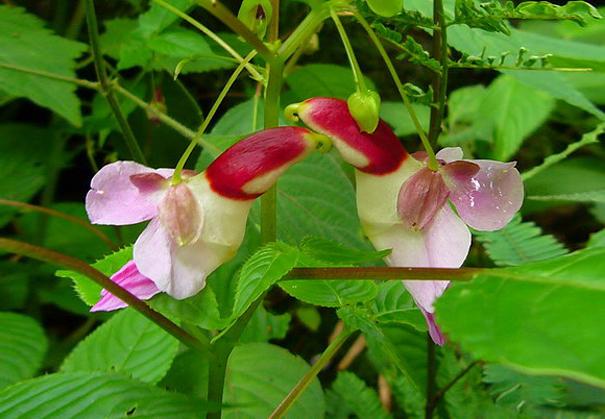

Parrot (Impatiens Psittacina)

Skull (Antirrhinum)
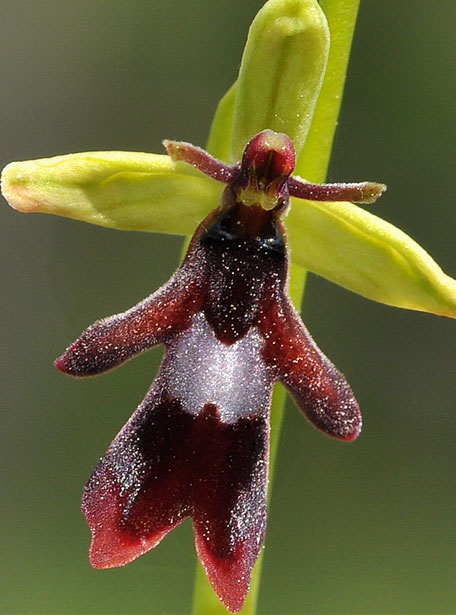
Ophrys flyworm(Ophrys insectifera)


Flying Pigeon (Habenaria Radiata)
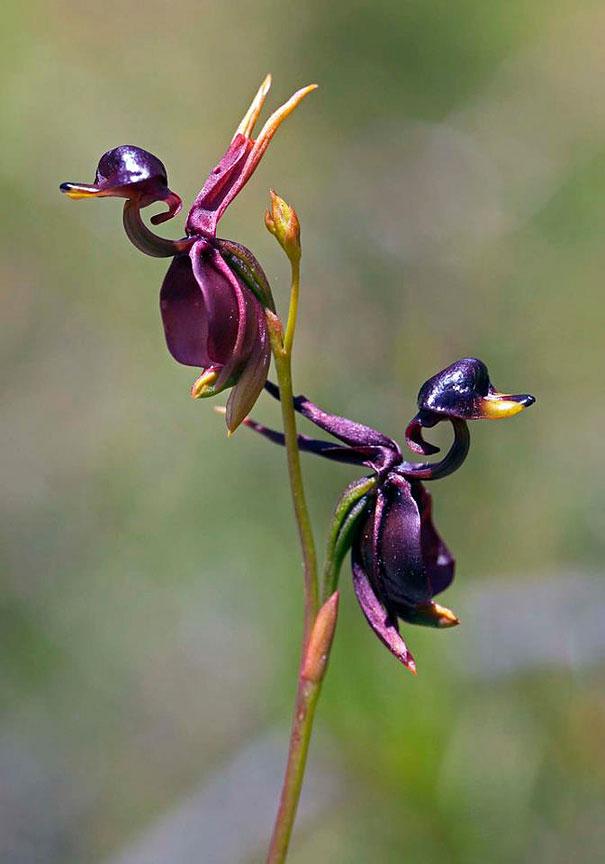


Flying duck orchid (Caleana major)

Orchid that looks like a tiger

![]()
Good-natured Alien (Calceolaria Uniflora)


Angel Orchid (Habenaria Grandifloriformis)
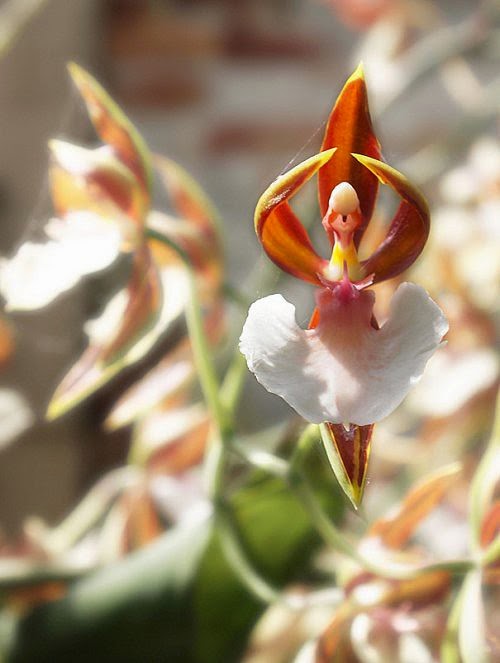
Orchid - ballerina
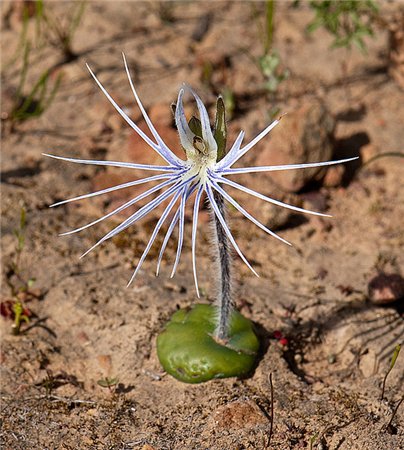
Spider orchid. Bartolina crest

Orchid mantis
Gorteria diffusa
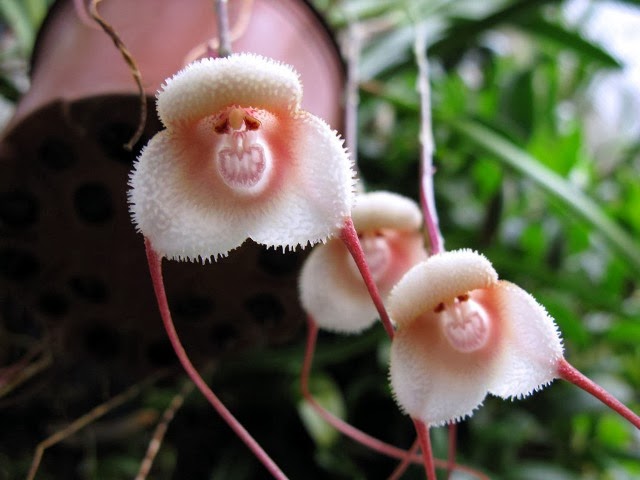
Dracula (lat.Dracula)

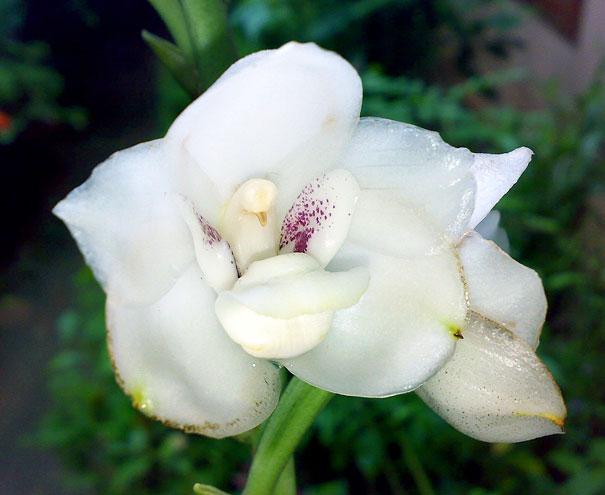

Dove Orchid (Peristeria Elata)


Phalaenopsis or moth orchid (Phalaenopsis)

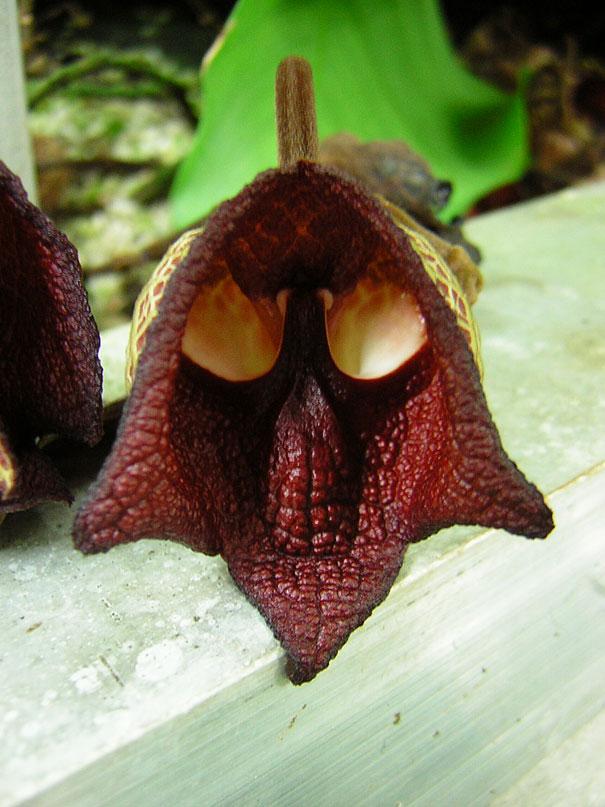
Darth Vader (Aristolochia Salvadorensis)

Who is this? Samurai in a cloak :))
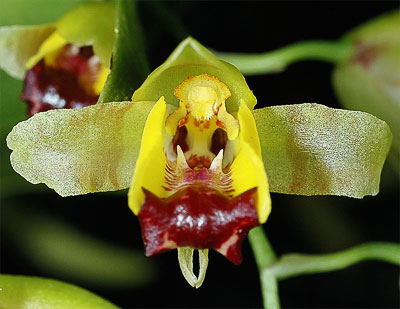
| Categories: | |
Cited
Liked: 9 users


